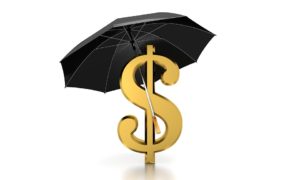 Courtesy of iii.org
Courtesy of iii.org
Most Americans are under stay-a-home orders at this stage of the coronavirus pandemic, and stress is running high for myriad reasons.
The pandemic has affected pets too. “Dogs that are used to kids being at school and adults at work are now finding themselves surrounded by their families 24/7,” according to Victoria Stilwell, CEO of Positively.com and the Victoria Stilwell Academy of Dog Training and Behavior. “Most welcome the company, but some dogs are having a hard time adjusting to the constant noise, attention and lack of space,” said Stilwell.
In some cases, dogs will exhibit anxious, aggressive, or destructive behaviors.
The National Dog Bite Prevention Week Coalition offers the following tips to help you and your pets cope while sheltering at home:
- Create a den-like space or “safe zone” in your home that is a “dog only” zone. This can be a crate where the door always remains open or a quiet location your dog can go to when it needs some space.
- Small children should be supervised around any dog. To make it easier, you can use baby gates to keep dogs and kids separated if you can’t actively supervise them.
- This is the time to teach your dog some new skills. Challenge your dog to learn new cues. If you need the help of a trainer, many now offer virtual consultations.
- If you can take your dog out for a walk, make sure you keep it on leash. Do not allow your pet to socially interact with other dogs or people. While humans are observing social distancing rules, they should help their dogs do the same.
- Having a plan in place for your pets is important. Individuals who become too sick or require hospitalization will need to have someone to take care of their animals while they heal. Just like any disaster preparedness plan, have a “bug out” bag ready.
Members of the National Dog Bite Prevention Week Coalition will share information during several webinars this week focused on how COVID-19 is impacting pets and pet owners. Experts will provide safety tips for sheltering at home with dogs, how to support animal shelters and rescues, and release 2019 dog-related injury claims data.
The Next webinar will take place on Friday, April 17 at 1:00 PM CST/2:00 PM EST
Zoom webinar for the general public (Registration Required):
https://zoom.us/webinar/register/WN_9cO7OQTVQXSdZb2UXs9ufQ
In a previously recorded webinar, Janet Ruiz, Strategic Communications Director, Triple-I, explained that when it comes to dog bite claims, it’s important to note that these are just incidents that were reported to insurance companies and that the actual number of dog bites is likely to be much higher. In 2019 homeowners insurers paid about $796.8 million as a result of 17,802 dog bite claims.
National Dog Bite Prevention Week (NDBPW) is April 12-18, 2020. Members of the National Dog Bite Prevention Coalition include the American Veterinary Medical Association (AVMA), State Farm®, Insurance Information Institute (Triple-I), American Humane, and the Victoria Stilwell Academy for Dog Training and Behavior. The coalition joins forces each year to draw attention to how people can reduce the number of dog bites.



